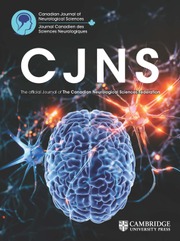No CrossRef data available.
Article contents
Evaluation of foot deformity using a three-dimensional geometric model
Published online by Cambridge University Press: 18 September 2015
Abstract
Core share and HTML view are not available for this content. However, as you have access to this content, a full PDF is available via the ‘Save PDF’ action button.
A three-dimensional geometric model of the foot's bony structure based on the use of a stereoradiographic technique is presented. To illustrate the potential of such a model it has been applied here to the study of cavus foot in a patient having Friedreich's ataxia. This model permits an accurate evaluation of this complex spatial foot deformity.
Information
- Type
- B—Clinical Physiology and Pathology
- Information
- Copyright
- Copyright © Canadian Neurological Sciences Federation 1984
References
Abdel-Aziz, Yi, Karara, HM (1971) Direct Linear Transformation from Comparative Coordinates Into Object Space Coordinated in Close-Range Photogrammetry. Proceedings ASP/VI,Symposiumon Close Range Photogrammetry, 1–18.Google Scholar
Allard, P, Sirois, JP, Thiry, PS, Geoffroy, G, Duhaime, M (1982) Roent-nographic Study of Cavus Foot Deformity in Friedreich Ataxia Patients: Preliminary Report. Can J Neur Sc 9. 113–118.CrossRefGoogle ScholarPubMed
Brown, RH, Burnstein, AH, Nash, CL, Schock, CC (1976) Spinal Analysis Using a Three-Dimensional Radiographic Technique. J Biomech 9. 355–365.CrossRefGoogle ScholarPubMed
Gamble, RO, Yale, I (1975) Clinical foot Roentgenology. Kreiger, RE. Sibille, J, Tremblay, C, Thiry, PS, Allard, P(1982) Apparatus for Normalized Bi-Planar Radiographs of the Foot. Journal of Biomechanics. 15 page 34.Google Scholar
Steel, MW III, Johnson, KA, Deevitz, MA, IIIstrup, DM (1980) Radiographic Measurements of theNormal Adult Foot. Foot and Ankle. 1, 151–158.CrossRefGoogle Scholar

